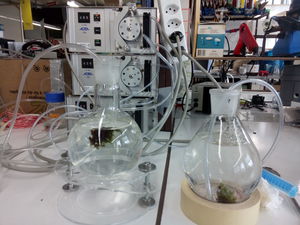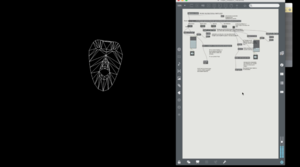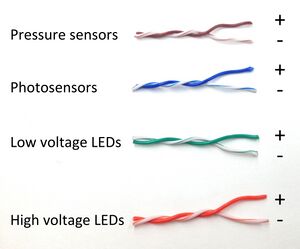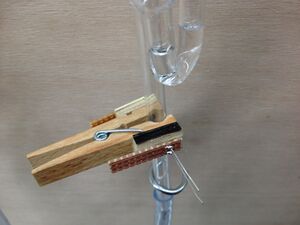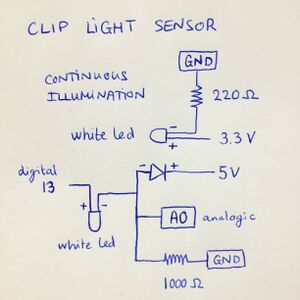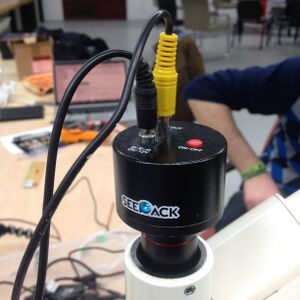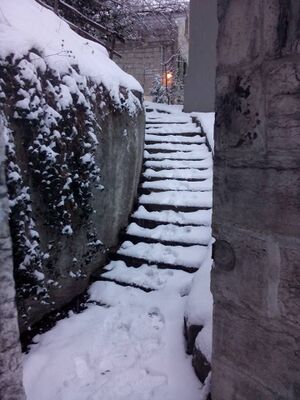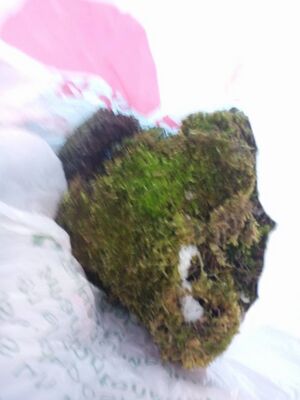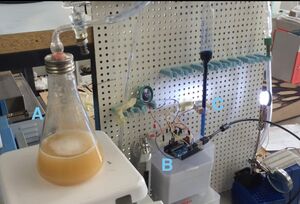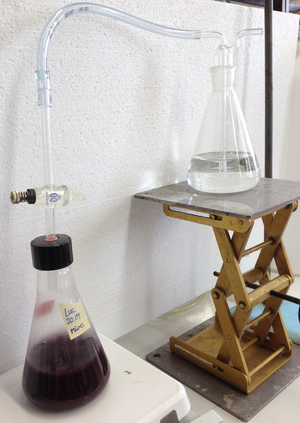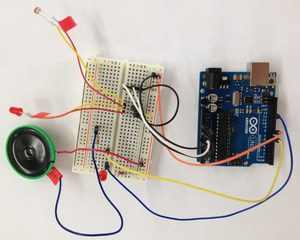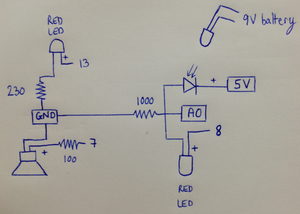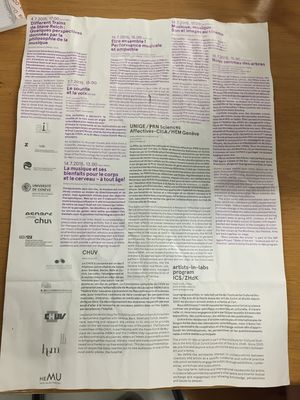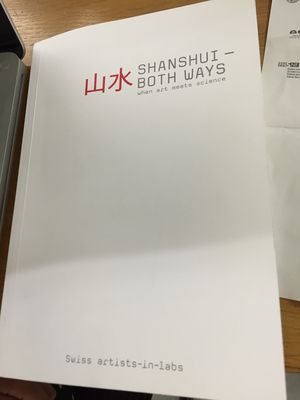Difference between revisions of "Living Instruments"
(→When?) |
|||
| Line 68: | Line 68: | ||
<br> | <br> | ||
| + | == Construction weeks 18-25.01.2016 == | ||
=== When? === | === When? === | ||
Every day 11-16th and 18th-25th January 9am - 5pm (or midnight.. depending on the day) <br> | Every day 11-16th and 18th-25th January 9am - 5pm (or midnight.. depending on the day) <br> | ||
Revision as of 12:49, 28 January 2016
Living Instruments is the tentative title for a collaborative project between London-based musician Serge Vuille (under the umbrella of his project WeSpoke), Hackuarium and the DIYbio community at large.
The final deliverable is a concert that will take place on February 10th 2016, at the music and performance art venue Le Bourg, in Lausanne, Switzerland. More information about the event can be found here.
The concert will be followed by a workshop at the Lift conference on innovation and digital technologies in Geneva, Switzerland, on February 12th 2016. More information about the workshop can be found here.
What
EN - This collaboration aims at three goals:
- To built a set of living instruments that use biological information or organisms as sources of signal.
- To compose a musical piece (creation) using these instrument and turning their output signal into sound
- Place this project in the context of the current state of DIY, science and music
FR - Cette collaboration a trois buts:
- Construire des instruments vivants (intégrant le vivant comme source de signal)
- Création d'une œuvre musicale (composition) en utilisant ces instruments
- Placer la démarche collaborative dans le contexte DIY, scientifique, et musical
Who is involved?
- Serge Vuille
- Vanesa Lorenzo
- Luc Henry
- Oliver Keller
- We Spoke musicians
- You?
When
EN - The concert is planned on February 10th 2016, at Le Bourg, Lausanne.
FR - Le concert est prévu le 10 février 2016, au Bourg, Lausanne.
What's Next
We are a small team working on the prototype we built during 'A long week-end dedicated to biomusical innovation' on 2015.09.19-21.
The project will be running until early February 2016 so there will be plenty of time to help.
More to come! We will update you on the next residence and events dedicated to bringing living instruments to life!
Log
The details of the preparation are recorded live here
A budget and shopping list for this project will be shared later on.
Construction weeks 25-29.01.2016
When?
Every day 25th-29th January 10am - 18pm (or midnight.. depending on the day)
Connecting FaceOSC to MaxMSP to tryout sound patterns.
=== Who was there? ===
Blubblob Pond
Blob with sea water organisms from a local pet store in a crystal ball, with camera, laser cut structure on transparent polyvinyl and metal screws and nuts.
Connected to MaxMSP
Facetracker Tree Tryouts with soundpatterns.
Construction weeks 18-25.01.2016
When?
Every day 11-16th and 18th-25th January 9am - 5pm (or midnight.. depending on the day)
Who was there?
- Serge Vuille
- Vanesa Lorenzo
- Luc Henry
- Alain Vuille
- Gilda Vonlanthen
- Olivier Keller
Building the modules
Wiring:
The whole system was wired using twisted-pair cables from Ethernet cables.
To avoid confusion, the 4 types of components were wired using a colour code (see picture below).
Fermentation cultures:
We used pure brewing yeast cultures growing in YPD medium and feeding on glucose to produce CO2 gas:
- Starting from 2mL dense culture (from overnight growth from plate) in 250 mL fresh medium.
- The next day, the dense culture were complemented with 50 mL of 40% glucose solution (not sterile) -> 8% final glucose concentration.
- The cultures started producing CO2 after 30 min (2 mL CO2 per minute)
- The cultures could be used after 90 minutes (5 mL CO2 per minute)
Bubble sensors:
Bubble sensors we built using a white LED and a photodiode. The setup was inserted in a wooden clothespin.
An option for the calibration of the sensors was explored based on a tutorial proposed by Arduino.
Microphones:
Microphone/Headphone Amplifier Stereo DIY kit (MK136, Velleman) were purchased from Distrelec and build according to instructions.
Paramecia tracking device:
SeePack microscope camera (see picture below) was mounted on our Carl Zeiss Axiolab E re microscope.
The EasyCapViewer 0.6.2 software was used as a player to record live images.
Mossphone:
Hunting the moss, building the platform and wiring it to Arduino.
Program in IDE Arduino.
HOW TO PROGRAM/WIRE TO ARDUINO AND COMMUNICATE WITH MAXMSP soon on Github.
FacetrackerTree:
A device that tracks human expression and a code to translate it to sound patterns.
Code on OpenFrameWorks here FaceOSC [1]
HOW TO COMMUNICATE WITH MAXMSP soon on Github.
Prototyping Week-end 19-21.09.2015
When?
Saturday 19th September 11am - 7pm
Sunday 20th September 10am - 8pm
Monday 21st September 10am - 6pm
Who was there?
- Serge Vuille
- Vanesa Lorenzo
- Luc Henry
- Michael Pereira
Brainstorming Session
We spent those three days brainstorming at UniverCité, trying to design 'instruments' that we could play, based on fermenting yeast cultures.
The 'instruments' we envisage would be driven by living organisms that produce work we can turn into sound. The most obvious example is fermentation (microorganisms eating glucose and rejecting alcohol and CO2) producing a gas that one can use to make bubbles, sounds, etc.
These instruments can fall into 3 categories:
LIVE - AUTONOMOUS AND COMPUTER INTERACTION No need for a human being to work in order to produce a sound from the living organisms activity.
- Gas producing fermentation broth (Bacteria and yeast) and gas-machine interactions
- Insects (moths, fruit flies) movement recognition software
LIVE - HUMAN INTERACTION A human subject will read a score written by living organisms and play an 'instrument' according to this score
- Keyboard and microscopic score -> observe microorganisms in water from local pond -> organisms move in microscope field on "score" slide
RECORDED - COMPUTER INTERACTION A recorded signal from an organism is used as a score and played either directly by a computer or by a human subject.
- Using for example genomic data (from the organisms used in other 'instruments') to generate sound. This could be simple (ATGC into tunes) or complex (use of amino acids triplex).
Building the first prototype
Together with Serge Vuille, our musician in residence, we designed and built a series of living instrument prototypes.
(Thanks biodesign.cc for the soldering iron!)
Overview of the prototype:
Before we go into too much details, you can check the video!
Now a bit more details. Below you find a picture of the setting, the recipe to produce CO2 from yeast fermentation and a scheme of the bubble detector device.
Tubing set-up:
A. is the 250mL yeast culture producing the CO2.
B. is the electronic circuit that allows our Arduino UNO board to make a variable sound when gas bubbles are going through the glass tube filled with ink-coloured water.
C. is simply a photodiode that will sense white light (from white LEDs) when the bubbles pass by.
Fermentation cultures:
We used two different types of cultures to produce CO2 gas:
As a test, we used random culture from rotting fruits juice.
- Blackberries were squashed into a juice and diluted with 1/5 water (40 mL into 160 mL) and the mixture stirred at room temperature. There was an immediate production of CO2 gas.
To get something more reproducible, we used pure brewing yeast cultures feeding on glucose.
- The composition of the overnight medium was as follow: 2.5g YE, 5g Peptone, 5g glucose in 250mL dd water ->sterilised in autoclave
- Starting from 2mL dense culture (from overnight growth) in 200 mL fresh medium, the optical density after 5 hours was 0.81 (closed vial) and 0.74 (open vial). The next morning it was 2.75 in open vial at 31°C and 2.89 in closed vial at 25°C.
- We added 50 mL of 40% glucose solution (not sterile) -> 8% final glucose concentration.
- The cultures started producing CO2 after 10 minutes.
Arduino bubble detector:
The blueprint is simple: if a bubble passes through the tube and crosses the path between the photodiode and the white LEDs, it makes a sound (green and black speaker). The pitch depends on the light intensity.
The code is coming up on Github.
Inspiration
16 Tadpoles reactive sound installation steel, glass, video camera, laptop, water, speakers, tadpoles 120 cm X 37,5 cm X 41 cm
Bubble logger Sparkfun tutorial
Bubble + pressure logger tutorial
Bubble counter tutorial with the corresponding video
Kick off Fri 24.07.2015
- Constat de Serge : Musique classique et contemporaine : déconnectée d'une réalité et d'un public de plus en plus large.
- Collaboration proposée : résidence au Bourg, 2e mercredi du mois, de janvier à mai 2016. Concert prévu le 10 février 2016. Création d'une nouvelle œuvre.
- Reprendre le format d'un concept que Serge programme déjà au Café OTO à Londres : https://www.cafeoto.co.uk/ https://www.facebook.com/pages/Kammer-Klang/702751833151411
- Projet pilote pour attirer nouveau public, établir ça sur 4 concerts par année au Bourg http://www.le-bourg.ch/
- We Spoke jouerait des pièces de répertoire ou donnerait la scène à d'autres ; travail avec d'autres institutions pour de la nouveauté
- Modèle de concert qui soit un labo, beaucoup d'interactions
- Pièces écrites aujourd'hui avec des sensors cf. Alexander Schubert
- Besoin : passer en vue la question de l'interface. La science peut-elle générer du signal qui peut produire/être transformée en son.
- Comment insérer bio/électronique en tant qu'output de qualité utilisable
- Data ? Vivant ?
- Peut être une présentation de l'ordre de 10 à 45 minutes pour la pièce finale
- Next steps : petite recherche de projets similaires. cf. Vanesa, affiche CHUV
- Inspiration? : http://liagiraud.com/experiences/immersion/
- Résidence Serge : 19-20/9, étendre au 23 pour présenter lors d'un Open Hackuarium?
